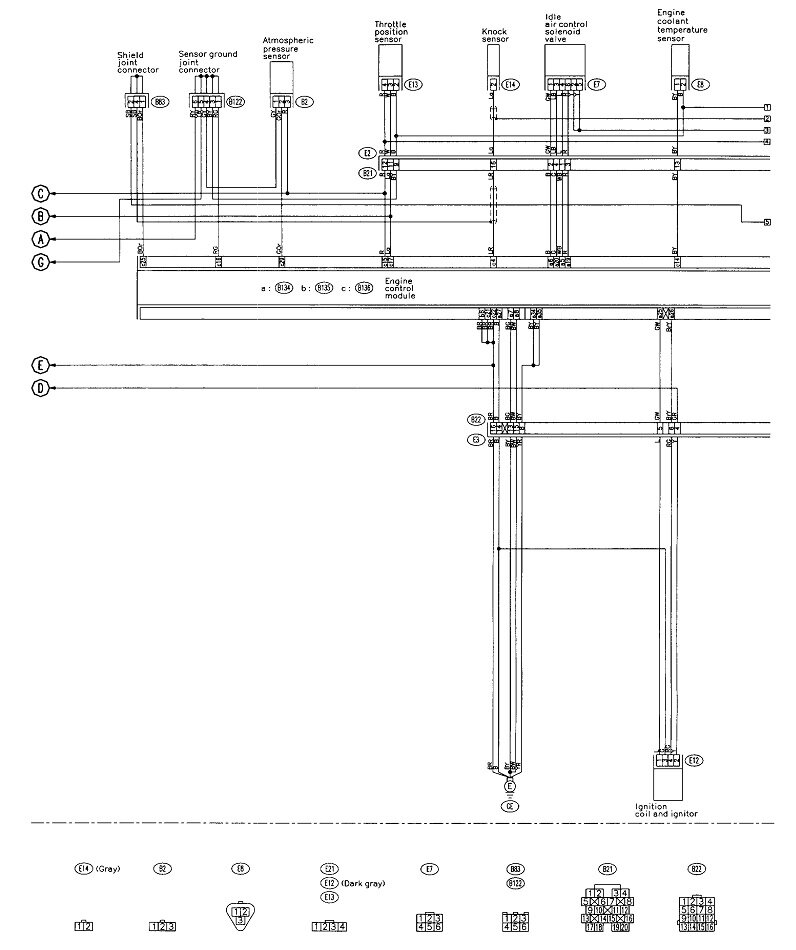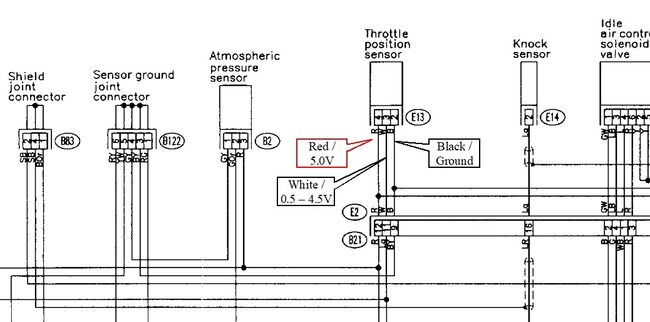P0123 - Throttle/Pedal Position Sensor/Switch A Circuit High Input
Two things can cause this code. By far the more common is a cut ground wire, corroded connector terminal, or corroded splice. Multiple sensors will share this ground wire, so depending on where the break is will determine how many sensors are affected and set fault codes.
The less common is a break in the sensor's signal circuit, and this one can defy logic. During normal operation, there's mechanical stops inside the sensor that limit the range of travel to roughly 0.5 volt at idle / closed throttle, to roughly 4.5 volts at wide-open-throttle, on the signal wire. (Those values are for training and explanation purposes. On any vehicle, you can find those to vary by a few tenths of a volt, but they must never reach 0.0 or 5.0 volts as those are the conditions that trigger fault codes).
With an open ground wire, the full 5.0 volts will be seen on the signal wire. Since that is outside the acceptable range of 0.5 to 4.5 volts, it would be detected as a defect and set the fault code, "TPS signal voltage too high". If the TPS is the only circuit with this code, the break has to be inside the sensor itself, (not common), between the two mating terminals in the sensor's connector, or in the section of wire going from the sensor to the splice connecting to other sensors.
A break in the signal wire, its connector terminals, or more commonly, inside the sensor itself, is a little trickier. You would expect to find 0.0 volts after that break, on the signal wire, but there's a lot of interconnected circuitry inside the Engine Computer where that signal circuit goes in. Due to that circuitry, it's very easy for the signal wire to "float" to some random value. If that random value were to remain between 0.5 and 4.5 volts, the computer will accept it and try to run on it. The only clue to the miserable engine performance would be if you noticed on a scanner the signal voltage did not sweep smoothly up and down as you worked the accelerator pedal.
To prevent that random value from showing up when the signal wire's circuit is broken, all manufacturers use either a "pull-up resistor" or a "pull-down resistor" connected to the signal circuit inside the computer. When everything is working properly, this extra resistor is of such a very high value that it has no effect on that circuit. It's when that break occurs that this resistor forces the signal voltage to go to a defective state that can be detected. Many import models use the pull-down resistor. That one is connected between the signal wire and ground. Remember, it's so big electrically, it has no effect when there's no defect. When there is a defect, in this case a break in the TPS signal wire's circuit, the pull-down resistor in effect shorts out any stray or random voltage that might appear and puts 0.0 volts there. That gets detected as a defect and the fault code, "TPS signal voltage too low" is set.
It's much more common, especially on domestic models, to use a pull-up resistor. That one is connected between the signal wire and the 5.0-volt supply inside the computer. Here again, when there's no defect, that resistor is much too big electrically to have any effect. When the signal wire is broken, however, that resistor puts 5.0 volts on the signal terminal in the computer. That's outside the acceptable range of 0.5 to 4.5 volts, so again, it results in the code, " TPS signal voltage too high.
This same defect will be introduced when the TPS connector is unplugged while the ignition switch is in "run". The ground and 5.0-volt circuits aren't monitored, but the computer is going to see the 5.0 volts on the signal wire thanks to the pull-up resistor. The computer doesn't know you have that connector disconnected. All it knows is there's 5.0 volts on the signal wire, that's indicating a break in that circuit, and it sets the fault code. That heartache is avoided by taking voltage readings by back-probing through the connector body, alongside the wires.
While I'm at it, I should mention too that there's one more cause for this code. There's a carbon strip, (resistor), in the sensor, and a small movable contact that slides across it corresponding to how far you have the accelerator pedal pressed. Dust or dirt could get in there, or more commonly, a chip of that carbon can break off and get stuck under the movable contact. This design is exactly the same as the mechanical volume controls in old tvs and car radios. It used to be very common for them to become noisy or scratchy as you turned them, and we'd have to spray some contact cleaner in them. That cleaning chemical won't make its way into a throttle position sensor, but they can become "noisy" in the same way. When you watch the signal voltage on a scanner as you work the gas pedal, you usually won't see those "dropouts" because they're there and gone way too quickly for the scanner to pick them up. Our eyes aren't fast enough either, but the Engine Computer is more than fast enough to catch them. To prevent being overly sensitive, the computer is a little forgiving on these dropouts, or it will want to see a certain number of them in a given amount of time before it decides to set a fault code. This only becomes a story worth telling when you get this code 0123, no cause can be found, and all the readings with a voltmeter are correct. It's good to be aware this type of failure can occur, but it isn't relevant here right now because we have all the other codes to consider.
With the fault codes coming back right away, the voltage readings at the sensor are going to be all we need to start the diagnosis. I do need to add one more minor clinker though, in case you see it. The common sensor ground wire doesn't usually go right to ground. If yours does, you're going to find 0.0 volts on it. On many models that ground circuit travels through the computer first, on its way to ground. That lets the computer monitor it. Because of the computer's circuitry, it's normal to find around 0.2 volts on it. Don't let that throw you if you see that. For our purposes, we can call that "0.0 volts".
When you measure on the sensor's three wires, the ground wire should have 0.0 volts, the supply, or feed wire will have 5.0 volts, and the signal wire will have something in between, 0.5 to 4.5 volts, depending on throttle setting. This works on any model and you don't even have to know which wire is which.
To streamline this and potentially add a little confusion, especially when you DO know which wire is the signal wire, you only need to measure that one. If you find the signal voltage to be within that acceptable range, 0.5 to 4.5 volts, that can only happen when the ground and the 5.0-volt wires are working correctly. There's no need to test them so that can save a little time.
The diagram is one of four for Powertrain Management. The second one is just part of it blown up for easier viewing. I added the three callouts for the wires to the TPS. Let me know what you find on those for voltages. Will be back tomorrow to see how far you got.
Images (Click to make bigger)
Sunday, September 24th, 2023 AT 7:49 PM




